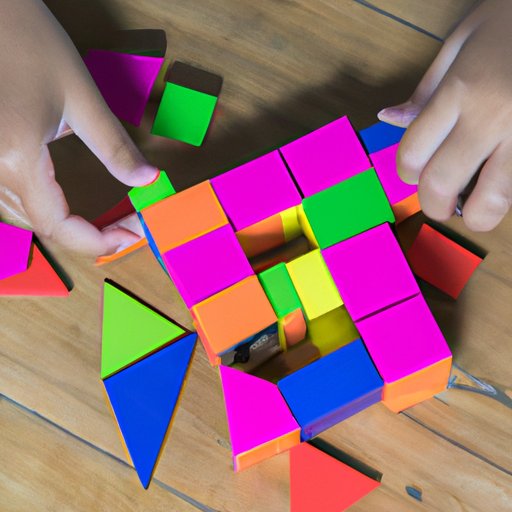Introduction
Creativity is an essential part of a child’s development. It helps them to think outside the box, come up with new ideas, and find solutions to problems. Unfortunately, many children are not given the opportunity to express and explore their creativity as much as they should be. In this article, we will discuss different ways to foster creativity in children.

Encourage Divergent Thinking and Exploration
Divergent thinking is the ability to come up with multiple solutions to a single problem. Encouraging divergent thinking in children helps them to think creatively and develop their problem-solving skills. Here are some tips for fostering divergent thinking in children:
- Allow children to come up with their own ideas. Instead of providing solutions, ask questions and encourage children to come up with their own answers. According to Dr. Robert Sternberg, “Parents and teachers should encourage children to generate their own ideas and not just accept what others have done.”
- Encourage exploration and experimentation. Give children opportunities to explore and experiment with different materials and activities. Allow them to make mistakes and learn from them.
- Give children opportunities to express themselves. Provide outlets for children to express their creativity, such as art or music. Encourage them to share their ideas with others.
Provide Open-Ended Activities and Materials
Open-ended activities and materials are those that can be used in a variety of ways. They allow children to use their imaginations and come up with their own solutions. Here are some tips for providing open-ended activities and materials:
- Set up activities that allow children to come up with their own solutions. Provide activities that require children to think critically and come up with their own solutions. For example, instead of giving them a jigsaw puzzle, give them a pile of shapes and let them create their own puzzle.
- Provide materials that can be used in a variety of ways. Offer materials that can be used in different ways. For example, provide children with blocks, paper, crayons, and other materials that can be used to build, draw, or create something new.
- Allow children to use their imaginations. Don’t limit children to specific instructions or rules. Let them use their imaginations and come up with their own ideas.
Allow for Unstructured Playtime
Unstructured playtime allows children to explore and experiment without any structure or rules. Here are some tips for encouraging unstructured playtime:
- Allow children to play without structure or rules. Let children play without any set objectives or outcomes. This gives them the freedom to explore and come up with their own ideas.
- Give children time to explore and experiment. Provide children with ample time to explore and experiment with different materials and activities. Don’t rush them or impose limits on their playtime.
- Encourage children to try new things. Encourage children to take risks and try new things. Don’t discourage them if they make mistakes or fail at something.
Offer Positive Reinforcement and Feedback
Positive reinforcement and feedback are important for fostering creativity in children. Here are some tips for offering positive reinforcement and feedback:
- Praise children’s efforts and achievements. Recognize and reward children for their efforts and accomplishments. Praise them for taking risks and trying new things.
- Give constructive feedback. Give children feedback that is constructive and helpful. Focus on what they did well and suggest ways to improve.
- Encourage children to take risks. Encourage children to take risks and try new things even if they may fail. Let them know it’s ok to make mistakes and learn from them.
Teach Problem-Solving Skills
Teaching problem-solving skills is an important part of fostering creativity in children. Here are some tips for teaching problem-solving skills:
- Show children how to approach problems. Show children how to break down problems into smaller parts and come up with possible solutions.
- Demonstrate how to think creatively. Demonstrate how to think outside the box and come up with creative solutions to problems.
- Help children find solutions to challenges. Help children brainstorm and come up with solutions to challenges. Encourage them to think critically and creatively.
Introduce New Ideas, Concepts, and Experiences
Exposing children to new ideas, concepts, and experiences helps to foster creativity. Here are some tips for introducing new ideas, concepts, and experiences:
- Expose children to a variety of experiences. Take children to museums, libraries, galleries, and other places where they can explore and learn about different cultures and ideas.
- Explore different cultures and ideas. Introduce children to different cultures and ideas. Read books, watch movies, and discuss topics from different cultures.
- Have conversations about new topics. Have conversations with children about new topics. Ask them questions and get them to think critically about different ideas and concepts.
Conclusion
Fostering creativity in children is an important part of a child’s development. Encouraging divergent thinking, exploration, open-ended activities, unstructured playtime, positive reinforcement, and teaching problem-solving skills are all key components of fostering creativity in children. By following these tips, parents and teachers can help children to become more creative and innovative thinkers.
In conclusion, fostering creativity in children is essential for their growth and development. By providing open-ended activities, encouraging exploration and experimentation, and introducing new ideas, concepts, and experiences, parents and teachers can help children to develop their creative thinking skills.
(Note: Is this article not meeting your expectations? Do you have knowledge or insights to share? Unlock new opportunities and expand your reach by joining our authors team. Click Registration to join us and share your expertise with our readers.)
